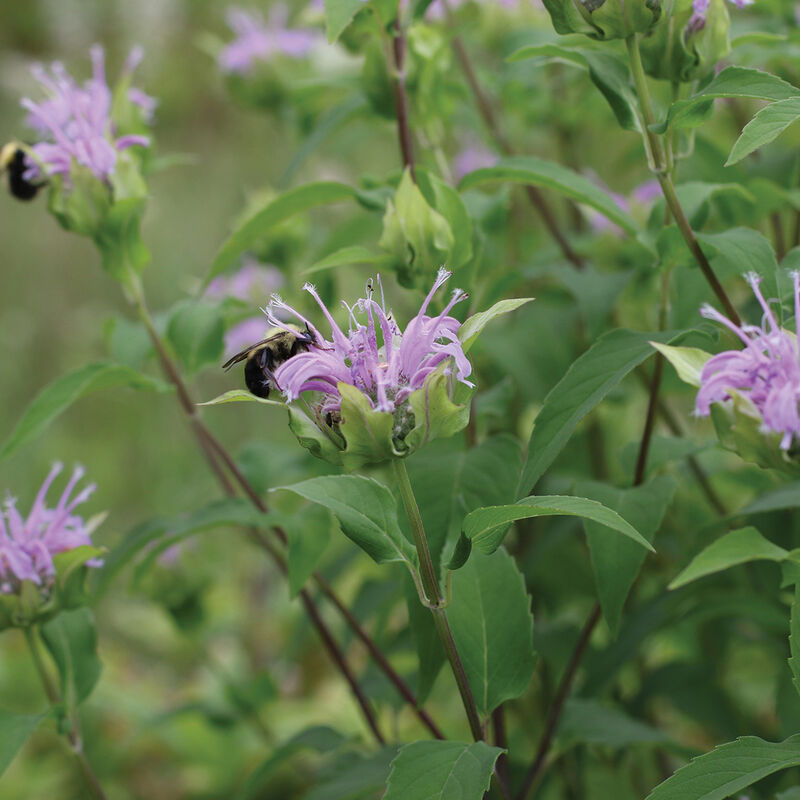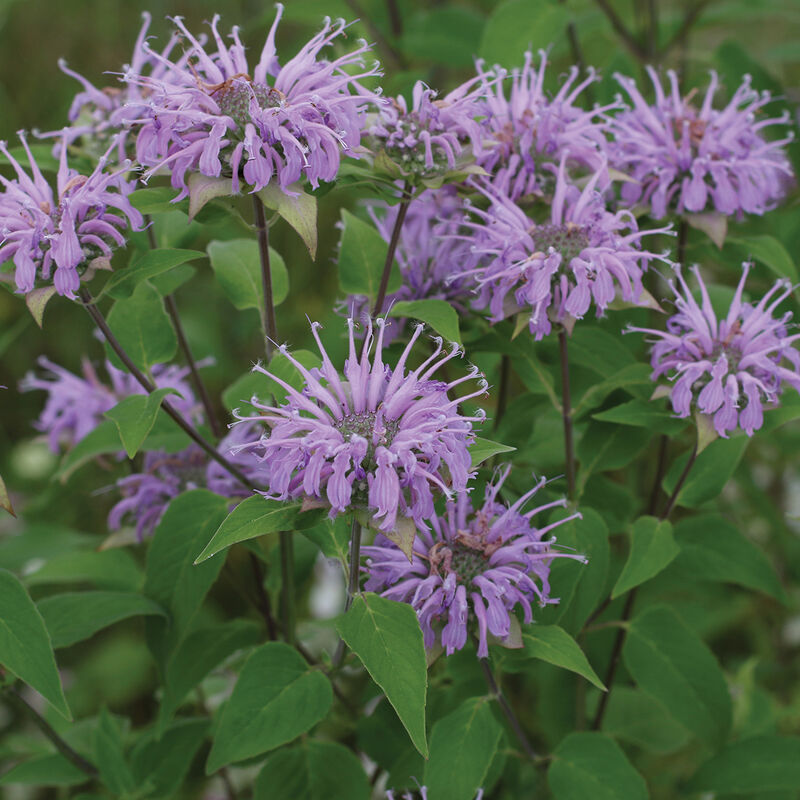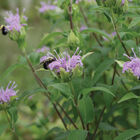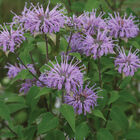Wild Bergamot Monarda Seed
Wild Bergamot Monarda Seed
Bright lavender blooms with a spicy scent.
Traditionally used by Indigenous Americans to soothe bronchial complaints and ease colds. Plants produce flowers in the second year after planting.Specs:
DAYS TO GERMINATION:
7-14 days at 60-70°F (16-21°C).SOWING:
Transplant (recommended): Sow the seeds in flats, barely covering them. Transplant to individual containers when the seedlings have their first true leaves. Transplant outside in the spring or summer, 6-8 weeks after starting the seeds, spacing plants 12-18" apart. Direct seed: Sow from early spring up until 8 weeks before the first frost in the fall. Direct seed or sow in a cold frame to be transplanted when they reach a height of 3-4". Sow about one seed per inch in rows 18" apart. Thin to 12-18" apart.DISEASE:
Bee balm is very susceptible to powdery mildew, which is exacerbated by humidity and any kind of plant stress, even drought. To reduce the likelihood of mildew, keep the soil moist, minimizing overhead watering; space the plants far enough apart to allow for good air circulation between plants; remove diseased foliage to prevent the fungus from overwintering; and divide the plant about every 3 years, discarding the old center growth and replanting the new side shoots.LIGHT PREFERENCE:
Sun/Part Shade.SOIL REQUIREMENTS: A moist, rich soil that is slightly acidic.PLANT HEIGHT:
36-48".PLANT SPACING:
12-18".HARDINESS ZONES:
Zones 4-10.HARVEST:
Starting the first year, leaves may be harvested. More leaves may be harvested each year as plant size increases. Bee Balm does not usually flower until the second year. Mature plants, 3-4 years old, can be divided to make new plants.SCIENTIFIC NAME:
Monarda fistulosaJohnny's is committed to your success, every step of the way.
We want you, our customer, to be 100% satisfied with all of our seeds, tools, and supplies.
If anything you purchase from us proves unsatisfactory, we will either replace the item or refund the purchase price.








